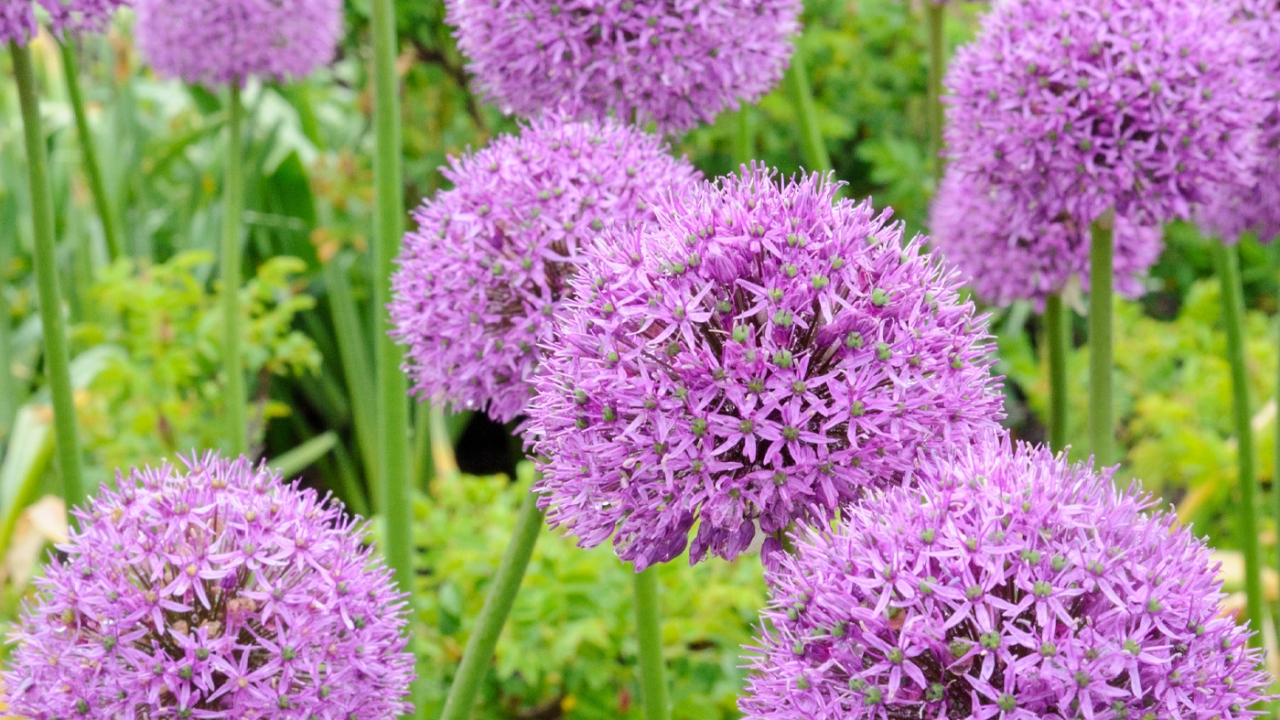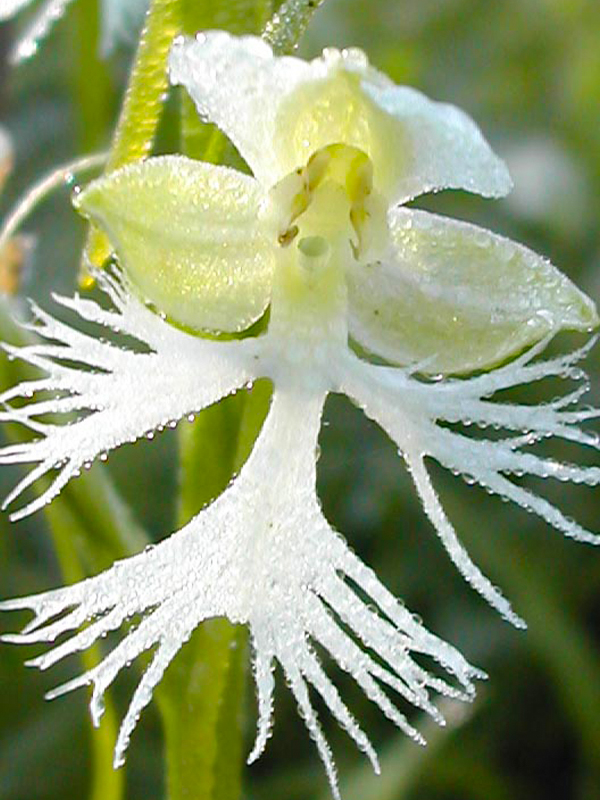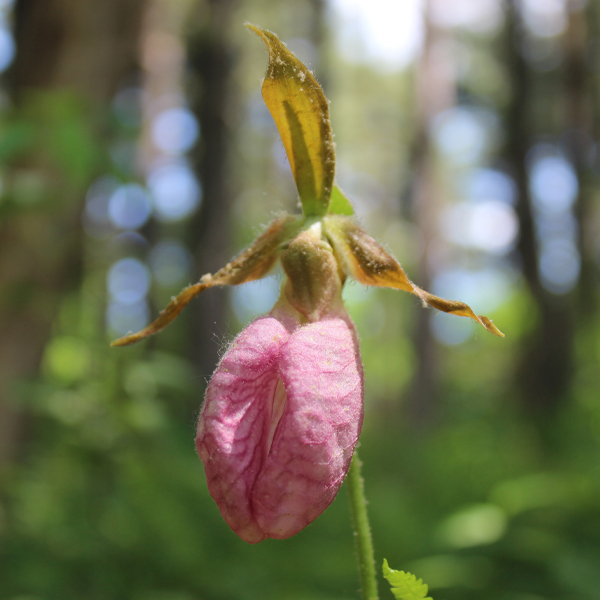

Orchids, Rare Illinois
The Snake-mouth Orchid
The snake-mouth orchid or rose pogonia (Pogonia ophioglossoides) is also a monitored plant. A beautiful pink or purple flower on a long slender stem, it has a fringed lower lip of yellow bristles designed to attract its main pollinator, the bumblebee. In the Chicago area it prefers fens and wet swales between dunes along the lakeshore. It reaches 16 inches, with one broad leaf sheathing the stem at midpoint.
The Grass Pink
A third endangered monitored orchid is the grass pink (Calapogon tuberosus), a delicate raceme of up to ten rose-pink to purple flowers found in the wet acid soil of bogs, peat meadows, and fens. This orchid grows to 18 inches and is described as "upside down," since the yellow crested lip is at the top of the flower whereas with most orchids, the hairy lip is at the bottom. These bristles mimic pollen-filled anthers that are so attractive to small bees.
Purple Fringed Orchid
Among the loveliest of the orchids of Illinois, but not yet monitored, is the purple fringed orchid (Platanthera psycodes), found in shady or sunny sites. The rose-purple or lavender-pink flowers are very showy, with 20 to 125 of them clustered in a cylinder at the top of the stalk. The lip of each flower is further divided into three fringed, fan-shaped segments. This orchid is pollinated by butterflies by day and moths by night. Only a few of the rare orchids are found locally. Orchids represent only one family of the 81 different species monitored by Plants of Concern volunteers at 91 different sites. As Masi says, "The more we learn about these plants, the better our chance of saving them from extinction." For more information on plant conservation science at the Garden, visit chicagobotanic.org/research.



